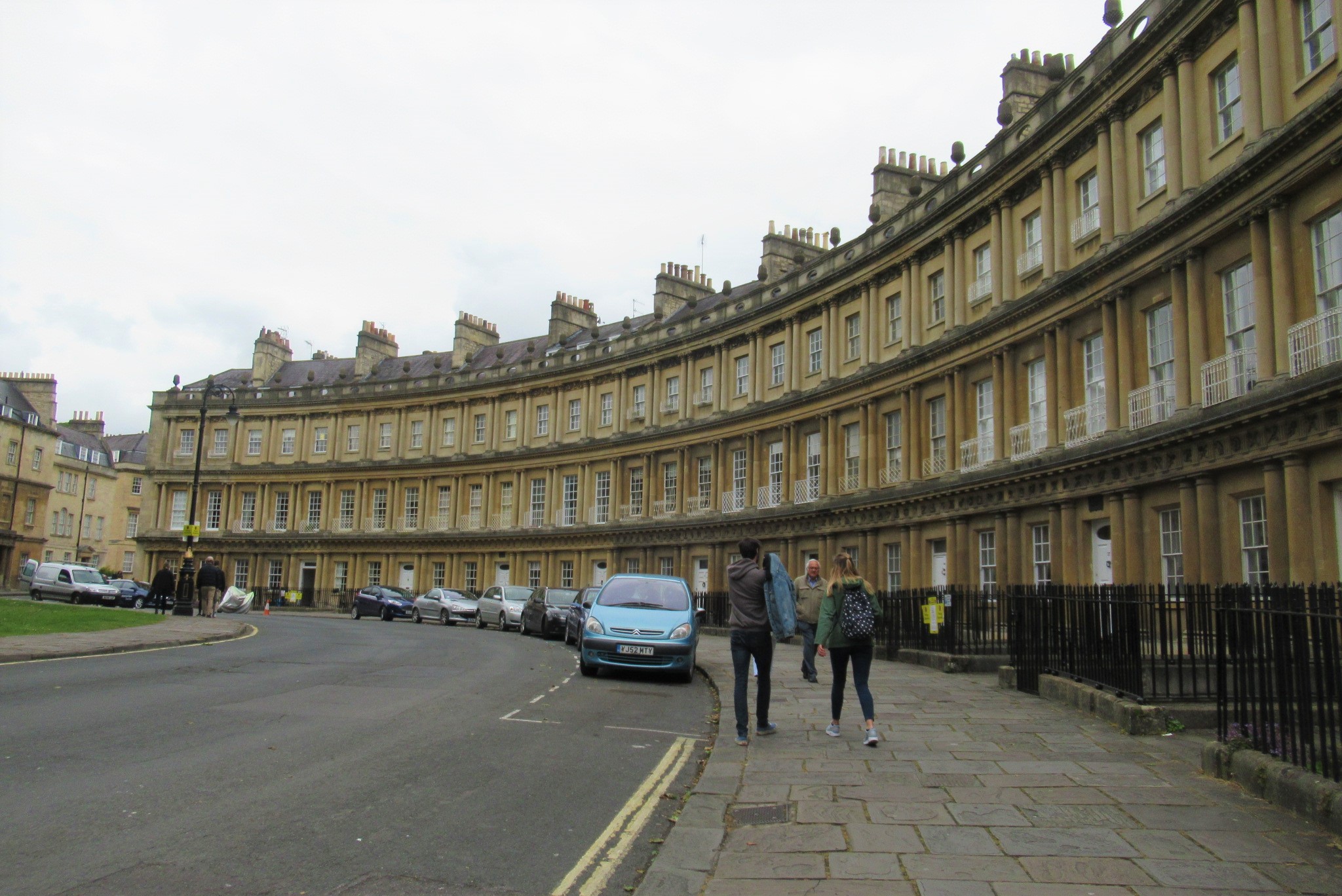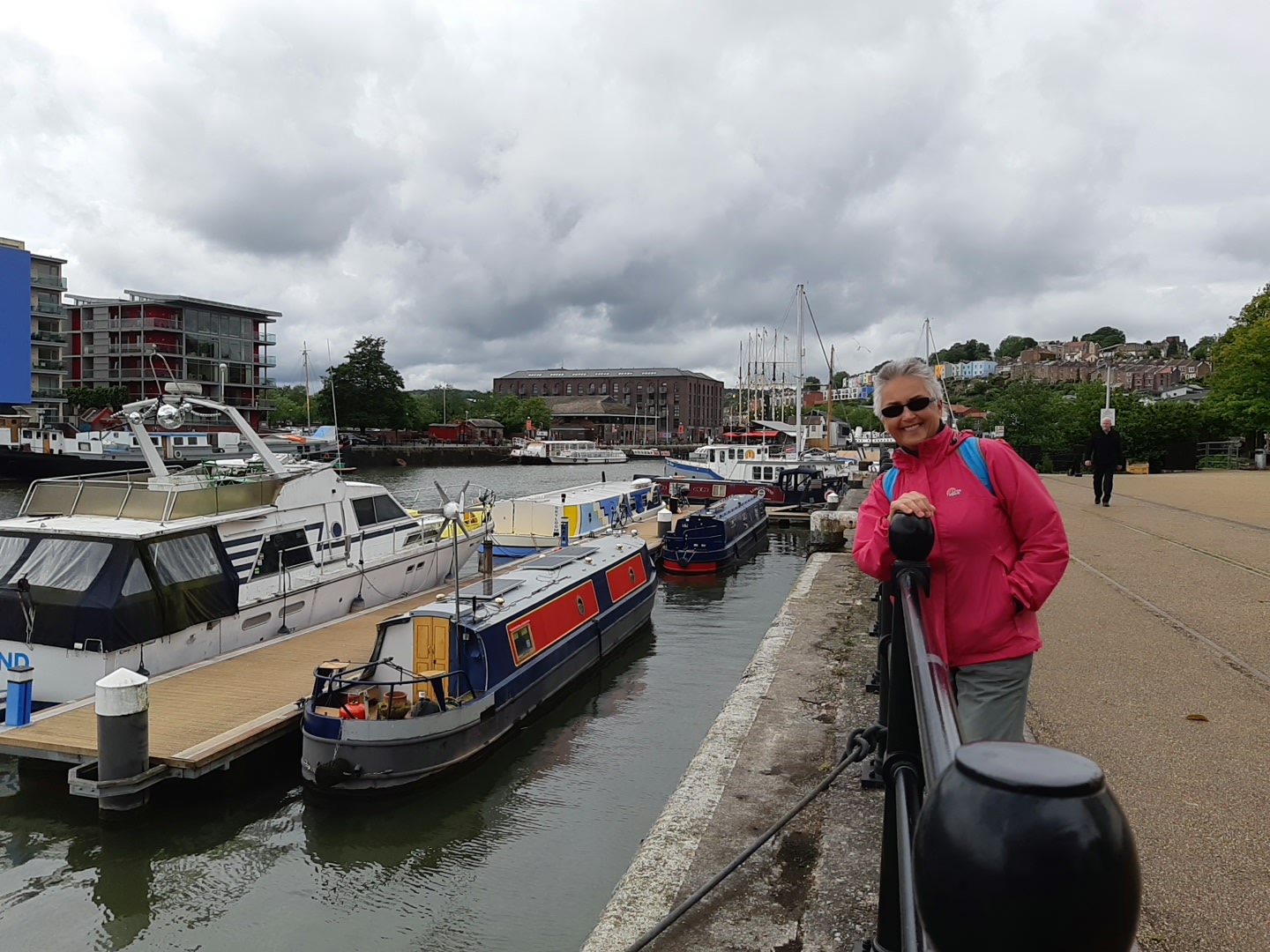Driving onwards from Padstow in our motorhome Vtee, saw us move into the Devon area again. Our first stop there was Clovelly, an early Saxon settlement nestled in a coastal valley.
We had to park Vtee at the top of the valley, and pay to get into this little fishing hamlet. Then we walked down its steep, narrow, heavily-cobbled street.
There was only one main street but it had a few narrow passages branching off it. The street is so steep and the cobbles so rough, that the locals use sleighs with runners instead of wheels, to move their goods around.
What an amazing place - apparently it was once owned by William the Conqueror’s wife and listed in the Doomsday Book.
Walking downwards, unsteady on the slippery cobbles, we eventually arrived at the wee harbour below. It is so quaint, with stunning views over the Bristol Channel.
The harbour and houses are constantly battered by the wind and sea here, and the wind and rain were getting up as we were leaving. Although it was a steep, wet walk down through the hamlet then up again, it was well worth the effort to see this unique place.
Next, we drove through the small Devon town of Biddeford, admiring its red-brick and white buildings. But the weather was deteriorating, so we drove on to Barnstaple. After admiring its historic architecture and river port, we carried on to our last place in Devon, the quaint town of Tiverton. We drove a loop through its narrow streets, then after spotting the interesting red brick Tiverton Castle, we got onto the M5, taking us out of Devon into Somerset.
Our destination was the Cheddar Gorge. This is a limestone gorge that was shaped by torrential floods of a melting ice age. It is a very beautiful area, sitting on the edge of the Mendip Hills.
However, by this time, the weather was so foul and persistently wet, that we were only able to drive though it rather than walk it. So we carried on toward Bath City, to find a campsite for the night.
We found one that proved to be a quite basic affair, but it was well located for an easy drive to a local park-and-ride. The next morning, we got ourselves to the park-and-ride, and caught a bus into Bath.
The rain held off, but it was not warm.
In Bath, we particularly enjoyed our visit to the amazing Roman Baths, which are a UNESCO World Heritage Site.
A natural hot spring was apparently discovered here as early as 863 BC, then a temple was constructed over it in 60–70 AD in the first few decades of Roman Britain. Over the centuries, the baths have been redeveloped many times and now-days are housed in an 18th-century building, accompanied by many relics and ruins from the Roman times.
Apparently, the water originates in the nearby Mendip Hills as rain. After seeping down deep into the earth, it heats and rises again at Bath.
The Roman Baths are no longer used for bathing, after dangerous amoeba were found in the water. It was all very interesting.
 |
| The Circus residences |
Georgian style architecture abounds in Bath and we really liked the Circus residential area, where the Georgian style houses are built in a curve.
The imposing Bath Abbey dominates the cityscape, and we also passed Sally Lunn’s House, which is now a coffee shop.
We found it to be a very busy city with lots of tourists, but easy to walk around.
Our wanderings took us to the Pulteney Bridge. The bridge straddles the Avon River and is quite beautiful.
It is reminiscent of an Italian city, with shops on both sides of the bridge, and apparently, is one of only four such bridges in the world.
We loved Bath, it is a very beautiful city with well-preserved historic buildings, and a great arts and restaurant scene.
The next day we drove to another park-and-ride. This time we caught a different bus that took us to Bristol. Arriving in the city centre, we soon found the St Nicholas Markets in the old Bristol Corn Exchange.
It was full of fabulous food stalls, so we had our lunch there.
The Corn Exchange has an interesting historic clock - it has two minute-hands. It seems that, before Greenwich Mean Time, each English city kept its own time.
However, once Bristol was connected to London by rail in 1841, another minute hand was added to the city’s main clock to remind people of London time, so that they would not be late for their London train. How amazing is that!
Bristol sits on the Avon River and has a whole area based around the harbour which includes restaurants, bars, shops and apartments.
 |
| Avon River in Bristol |
However, it seemed to us, to lack the vibrancy of Bath, even though they are only about a 40 minute drive apart. Overall, we really enjoyed the architecture and history of both cities.
We've loved what we've seen of Devon and Somerset, but now its time to move on. Our next stop will be in the Cotswolds.
This is part of a bigger blog on our travels around England, Wales, Ireland, Scotland, Belgium and Luxembourg. The first blog is called "Off to do the UK in a motorhome".






Comments
Post a Comment